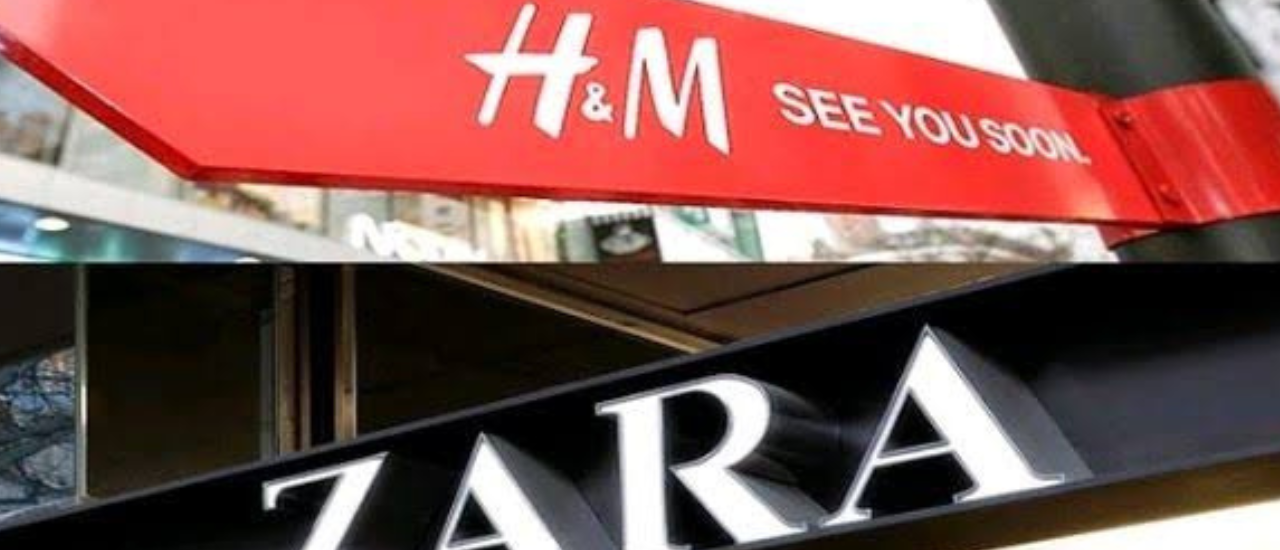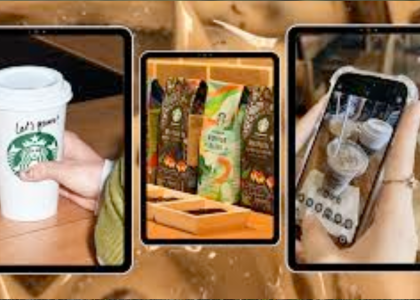Executive Summary
The global fast-fashion industry has grown into one of the most dynamic consumer categories, with urban youth and working professionals driving demand for affordable yet fashionable clothing. Among the leading players in this segment, Hennes & Mauritz (H&M) and ZARA (owned by Inditex Group) stand out as the two most influential brands in shaping urban consumer behavior worldwide.
While both brands operate in the same fast-fashion category, their consumer segmentation strategies differ significantly. H&M positions itself as an accessible, value-driven fashion retailer appealing to a wide urban audience with emphasis on affordability, sustainability, and mass accessibility. In contrast, ZARA has cultivated a premium fast-fashion identity, offering limited-run collections with strong fashion orientation, thereby creating exclusivity and aspirational value for its urban consumer base.
This case study explores how H&M and ZARA segment their urban consumers across demographics, psychographics, behaviors, and geographies. It compares the underlying strategies, evaluates consumer insights from India and global markets, presents case examples, and highlights best practices in urban consumer segmentation.
The study concludes that while H&M thrives on democratizing fashion for a broad base of urban millennials and Gen Z, ZARA builds loyalty by cultivating a trend-driven, fashion-exclusive identity for more affluent and style-sensitive urban cohorts. For future success, both brands must adapt to changing urban consumer demands, including sustainability concerns, digital shopping, and personalized experiences powered by AI and data analytics.
Background / Situation
The Fast Fashion Industry
The fast-fashion model, characterized by short design-to-store cycles, rapid trend adoption, and affordable pricing, emerged in the 1990s and reshaped global apparel consumption. By producing collections that mimic runway trends at lower prices, brands like ZARA and H&M have captured a dominant share of the youth and urban professional apparel market.
Urbanization as a Key Driver
More than 56% of the world’s population now resides in urban areas, a figure projected to reach 68% by 2050 (UN, 2023). Urbanization has led to higher disposable incomes, greater exposure to global fashion trends, and rising aspirations among young professionals. As a result, fashion consumption patterns in cities are faster, more frequent, and heavily influenced by global culture and digital platforms.
The Position of H&M and ZARA
-
H&M: Founded in Sweden, now operates across 75+ markets with 4,000+ stores. Known for affordable fashion, sustainability initiatives, and large product ranges.
-
ZARA: Flagship brand of Spain’s Inditex Group, with 2,000+ stores worldwide. Famous for its rapid turnaround (as little as two weeks) from design to store shelves, positioning itself as the leader in fast-fashion innovation.
In India, both brands entered in the mid-2010s (H&M in 2015, ZARA in 2010). Today, H&M has 50+ stores, while ZARA has ~20. Despite having fewer stores, ZARA often outperforms H&M in revenue per store, reflecting differences in segmentation and pricing.
Market Context
Global Market Size
The global fast fashion market was valued at USD 122 billion in 2023 and is projected to grow at a CAGR of 7.7% through 2030 (Statista, McKinsey). Urban consumers account for over 70% of this demand, with Asia-Pacific and Europe being key growth regions.
Indian Market
India’s fashion retail market is estimated at USD 100–110 billion in FY24, projected to grow to USD 180–200 billion by FY30 (8–10% CAGR). Within this, fast fashion and international brands form a rapidly growing segment driven by urban millennials, Gen Z, and increasing e-commerce penetration.
Competitive Landscape
-
International Players: H&M, ZARA, Uniqlo, Mango, Forever 21.
-
Domestic Competitors: Reliance Trends, Pantaloons, Lifestyle, Zudio (gaining strong traction in Tier-2/3).
-
Online Competitors: Myntra, Ajio, Nykaa Fashion, Shein (via partnerships).
Consumer Segmentation Framework
A robust consumer segmentation framework is essential to understand how H&M and ZARA tailor their strategies to urban markets.
A. Demographic Segmentation
-
Age: 18–35 years dominate both brands’ consumer bases.
-
Gender: Women form ~60% of customers, though men’s collections are growing.
-
Income:
-
H&M: Middle-income urban consumers.
-
ZARA: Upper-middle to high-income professionals.
-
B. Psychographic Segmentation
-
H&M Consumers: Value affordability, casual and versatile wardrobes, eco-friendly choices, openness to global trends but price-sensitive.
-
ZARA Consumers: Seek exclusivity, identify as fashion-forward, socially conscious but more trend-driven, willing to pay premium for style.
C. Behavioral Segmentation
-
Shopping Frequency: Urban consumers shop fast fashion 6–10 times annually.
-
Channel Preferences: Increasing shift to online channels; ZARA still heavily reliant on offline stores for exclusivity, while H&M pushes omnichannel.
-
Loyalty Factors: H&M—price, variety, sustainability; ZARA—exclusivity, style, fast turnaround.
D. Geographic Segmentation
-
Tier-1 Metros: Delhi, Mumbai, Bangalore, Hyderabad, Chennai—core markets for both brands.
-
Tier-2 Cities: Indore, Jaipur, Lucknow—H&M expanding faster, ZARA slower due to premium focus.
H&M’s Urban Consumer Segmentation
H&M’s brand positioning is rooted in democratizing fashion. Its urban consumer segmentation revolves around the following:
-
Age & Life Stage:
-
Students and young professionals (18–28).
-
Entry-level jobs, limited disposable income.
-
-
Income & Price Sensitivity:
-
Middle-income earners with monthly salaries between INR 30,000–60,000.
-
Seek affordable global fashion.
-
-
Fashion Orientation:
-
Preference for basics, casual wear, and everyday utility fashion.
-
Moderate trend adoption, less focused on exclusivity.
-
-
Sustainability Appeal:
-
H&M Conscious Collection resonates with eco-aware youth.
-
Urban millennials seeking ethical consumption engage positively.
-
-
Digital Native Segment:
-
Heavy reliance on online shopping (via Myntra, H&M app).
-
Influenced by Instagram trends, influencer collaborations (e.g., H&M x Sabyasachi in India).
-
ZARA’s Urban Consumer Segmentation
ZARA’s consumer segmentation is sharper, focusing on fashion-driven, premium urban consumers.
-
Age & Life Stage:
-
Millennials & early Gen Z (22–35).
-
Working professionals with stable disposable income.
-
-
Income & Price Orientation:
-
Upper-middle to high-income brackets.
-
Willing to pay INR 2,500–5,000 for premium dresses, jackets, or accessories.
-
-
Fashion Orientation:
-
High trend sensitivity—regularly adopt global runway trends.
-
Appreciate exclusivity (limited-run collections).
-
-
Urban Lifestyle Fit:
-
Socially active professionals seeking statement clothing for work and leisure.
-
Value the “fastest fashion” model—new designs every 2–3 weeks.
-
-
Brand Image:
-
Viewed as aspirational yet accessible luxury.
-
Preferred by influencers, celebrities, and high-spending urban consumers.
-
Comparative Analysis: H&M vs ZARA
|
Factor |
H&M |
ZARA |
|---|---|---|
|
Price Range |
INR 799–2,999 |
INR 1,999–5,999 |
|
Target Consumer |
Mass urban middle class |
Affluent urban professionals |
|
Brand Perception |
Accessible, democratic fashion |
Exclusive, premium fast fashion |
|
Store Locations |
Expanding in Tier-1 & Tier-2 |
Focused on Tier-1 metros |
|
Product Range |
Basics, casual wear, sustainable line |
High-fashion, trend-driven apparel |
|
Shopping Frequency |
6–8 times annually |
4–6 times annually |
|
Digital Adoption |
Strong omnichannel + collaborations |
Strong offline presence, selective online |
This comparison shows H&M’s segmentation is broad-based, while ZARA’s is niche yet premium, with fewer consumers but higher revenue per store.
Consumer Insights from Urban Markets
-
Why H&M?
-
Affordable pricing and wider size inclusivity.
-
Frequent discounts and loyalty programs.
-
Appeal to eco-conscious shoppers.
-
-
Why ZARA?
-
Fashion exclusivity and aspirational image.
-
Quick trend adoption—consumers see Zara as fashion authority.
-
Peer and influencer validation.
-
-
Urban Shopper Trends
-
Indian millennials prefer “affordable luxury”—H&M balances well.
-
ZARA caters to metro elite—Bangalore, Delhi, Mumbai professionals.
-
Both face challenges from Zudio and fast-growing online brands.
-
Case Examples / Micro Studies
-
Delhi Consumer (H&M): 24-year-old postgraduate student, shops for casual wear under INR 1,500, influenced by Instagram ads, values H&M Conscious line.
-
Mumbai Consumer (ZARA): 28-year-old finance professional, shops monthly, spends INR 4,000–6,000, attracted to exclusivity, limited editions.
-
Bangalore IT Professional: Splits shopping between H&M for basics and ZARA for office events/social outings.
-
London/NYC Case: Urban segmentation mirrors India; ZARA dominates style-driven, while H&M appeals to price-sensitive youth.
Future Outlook
-
Sustainability vs Fast Fashion: Urban consumers are becoming increasingly critical of fast fashion’s environmental impact.
-
Omnichannel Integration: Digital + offline seamlessness will be crucial.
-
AI Personalization: Recommendation engines, AR fitting rooms, and AI-led design cycles will reshape segmentation.
-
Tier-2 Expansion: H&M will likely grow faster in smaller urban clusters; ZARA may remain premium metro-focused.
Best Practices / Learnings
-
H&M Strengths: Democratization of fashion, broad base, sustainability narrative.
-
ZARA Strengths: Exclusivity, aspirational branding, rapid fashion cycles.
-
Combined Learning: Future segmentation must integrate price, exclusivity, and sustainability while leveraging digital personalization.
Sources
-
Statista (2023–24), Global Fast Fashion Reports.
-
McKinsey & Co, State of Fashion 2024.
-
Business of Fashion, India Fashion Reports.
-
Entrackr (2024), H&M vs ZARA vs Uniqlo India Growth.
-
Economic Times, Mint, Vogue Business, Financial Times.
-
Inditex & H&M Annual Reports (2023).
-
Coherent Market Insights (2024), India Fast Fashion Market Report.






